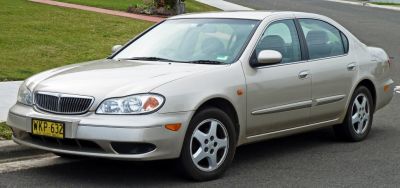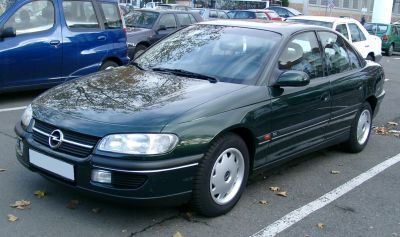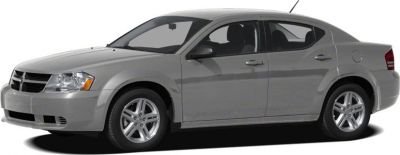 2014 Peugeot 508 I (Phase II, 2014) Dimensions, Size & Specs
2014 Peugeot 508 I (Phase II, 2014) Dimensions, Size & SpecsMeasurements of the 2014 Peugeot 508 I, engineered for optimal performance and comfort
| Dimensions | |
|---|---|
| Length: | 4830 mm190.2 in15.8 ft |
| Width: | 1828-1864 mm72.0-73.4 in6.0-6.1 ft |
| Width (Opened Mirrors): | 2068 mm81.4 in6.8 ft |
| Height: | 1456-1525 mm57.3-60.0 in4.8-5.0 ft |
| Ground Clearance: | 146-184 mm5.7-7.2 in0.5-0.6 ft |
| Trunk Capacity: | 473-515 liter16.7-18.2 cu ft |
| Trunk Capacity (Max): | 1183 liter41.8 cu ft |
| Weight Specifications | |
| Curb Weight: | 1390-1660 kg3064-3660 lbs |
| Maximal permitted Weight: | 1945-2325 kg4288-5126 lbs |
| Tire Specifications | |
| Rims Sizes: |
|
| Tire Sizes: |
|
The Peugeot 508 I (Phase II, 2014) represents a refined mid-size sedan produced between 2014 and 2018, known for its elegant design and practical dimensions ideal for both comfortable city driving and longer journeys. This iteration of the 508 series features a length ranging from 4828 to 4830 mm (190.0 to 190.1 inches), reflecting a modest size among family sedans that balances interior space and maneuverability. With a width spanning 1828 to 1864 mm (72.0 to 73.4 inches), and extending to 2068 mm (81.4 inches) including opened mirrors, it offers a stable road presence while remaining suited for typical urban parking spaces. The vehicle's height varies between 1456 and 1525 mm (57.3 to 60.0 inches), which contributes to an aerodynamic profile and a comfortable cabin environment.
Curb weight for the Peugeot 508 I Phase II ranges from 1390 to 1660 kg (3064 to 3661 lbs), with a maximum authorized weight between 1945 and 2325 kg (4289 to 5127 lbs), depending on specific configurations and trims. The sedan provides a spacious luggage compartment with a capacity of 473 to 515 liters (16.7 to 18.2 cubic feet), expandable to 1183 liters (41.8 cubic feet) by folding rear seats, offering great versatility for cargo and travel needs.
The ride height or ground clearance varies from 146 to 184 mm (5.7 to 7.2 inches), promoting a balanced combination of road comfort and agility. The Peugeot 508 I Phase II rides on rim sizes ranging from 16 to 19 inches, paired with tire dimensions including 215/60 R16, 215/55 R17, 235/45 R18, 205/60 R16, 235/40 R19, and 215/55 R17 94W, catering to varying driving preferences and road conditions. This generation of the Peugeot 508 is well-regarded for combining sophisticated styling, efficient space utilization, and solid driving dynamics, making it a competitive choice in the executive sedan segment.
Discover the standout features that make the 2014 Peugeot 508 I a leader in its class
Have a question? Please check our knowledgebase first.
The Peugeot 508 I (Phase II, 2014) sedan has a length ranging from 4828 to 4830 mm (approximately 190.1 to 190.2 inches). Its width varies between 1828 mm and 1864 mm (about 72 to 73.4 inches), excluding mirrors. When the side mirrors are opened, the total width extends to 2068 mm (around 81.4 inches). The height of this model ranges from 1456 mm to 1525 mm (approximately 57.3 to 60 inches), depending on configuration and trim. These dimensions place the 508 I Phase II comfortably within the mid-to-large sedan category, offering a spacious cabin and a balanced stance.
The Peugeot 508 I (Phase II) offers a generous luggage capacity tailored for sedan versatility. With the rear seats upright, the luggage compartment holds between 473 and 515 liters (about 16.7 to 18.2 cubic feet) of cargo, which is quite substantial for its class. When folding down the rear seats, the capacity expands dramatically to 1183 liters (approximately 41.8 cubic feet). This extended space enables the transport of larger items or increased cargo volume, highlighting the model’s practicality for families or users needing flexibility—a notable strength in comparison with many sedans that have less adaptable trunk space.
The curb weight of the Peugeot 508 I Phase II ranges from 1390 kg to 1660 kg (about 3064 to 3661 pounds), reflecting variations in engine choices, trim levels, and equipment. The maximum permissible weight ranges from 1945 to 2325 kg (approximately 4289 to 5125 pounds). A relatively moderate curb weight combined with a higher maximum weight means the 508 balances agility and comfort, providing nimble handling dynamics without compromising load-carrying capability. This balance contributes to efficient fuel economy and stable road manners while accommodating passengers and luggage comfortably.
The Peugeot 508 I (Phase II) features a ride height or ground clearance ranging from 146 mm to 184 mm (approximately 5.7 to 7.2 inches), depending on trim and suspension setup. This range offers a compromise between sporty driving performance and practical usability. At the lower end, a reduced ground clearance enhances aerodynamic efficiency and handling, ideal for urban and highway driving. At the higher end, better clearance helps the car navigate rougher roads, speed bumps, and light obstacles without scraping. This versatility makes the 508 suitable for a variety of driving conditions commonly encountered by owners.
Yes, the Peugeot 508 I (Phase II) generally fits into a standard residential garage, but with some considerations. Typical single-car garage width ranges from 2400 mm to 3000 mm (94.5 to 118 inches), so with the 508’s width between 1828 mm and 1864 mm (72 to 73.4 inches) without mirrors, it comfortably fits width-wise. Including mirrors (2068 mm or 81.4 inches), careful mirror folding or garage calibration might be needed in tighter spaces. The length of around 4830 mm (190.2 inches or 15.85 feet) also fits well within most garages, which are usually 4.8 to 6 meters (16 to 20 feet) deep. Height is not typically an issue, as 1456-1525 mm (57.3-60 inches) is modest for garages.
The Peugeot 508 I Phase II has a width of about 1828 to 1864 mm (72 to 73.4 inches) without mirrors, and 2068 mm (81.4 inches) with mirrors opened. Compared to similar mid-size sedans such as the Volkswagen Passat, Ford Mondeo, and Mazda 6, the 508’s mirror-open width is slightly wider but generally comparable. For instance, the VW Passat is about 1832 mm wide (72.1 inches) without mirrors and approximately 2100 mm (82.7 inches) with mirrors. Therefore, while slightly wider than some competitors, the Peugeot 508 remains within the typical width range for its segment, offering a commanding road presence without being cumbersome.
The Phase II Peugeot 508 retained much of the original 508 I body size but introduced subtle dimension changes for styling and comfort improvements. The length of Phase II is around 4828 to 4830 mm, very close to Phase I which measured near 4840 mm, revealing only minor variation. Width increased slightly from approximately 1810 mm in Phase I to around 1828-1864 mm in Phase II depending on trim, reflecting adjustments for wider tires and improved stability. Height and ground clearance saw small tweaks, mainly due to revisions in suspension and bodywork styling. Overall, Phase II optimized practical space and modernized design while maintaining the footprint of the original generation.
Dimensionally, the Peugeot 508 I Phase II holds its own against competitors such as the Opel Insignia, Skoda Superb, and Ford Mondeo from the same era. Its length at approximately 4830 mm (190.2 inches) is competitive, providing ample legroom and a spacious cabin environment. The width with mirrors folded (1828-1864 mm) offers a broad stance conducive to stability and interior shoulder room, although some rivals like the Skoda Superb might be slightly wider internally. Luggage space is quite generous at up to 515 liters (18.2 cubic feet) with seats up and 1183 liters (41.8 cubic feet) folded, which is above average in class. Ground clearance and ride height balance sporty driving and usability well, making the Peugeot attractive for buyers seeking an elegant yet practical sedan.
The Peugeot 508 I Phase II offers a variety of wheel sizes including 16, 17, 18, and 19 inches, with corresponding tire sizes such as 215/60 R16, 215/55 R17, 235/45 R18, 205/60 R16, 235/40 R19, and 215/55 R17 94W. Larger 19-inch wheels typically increase the vehicle's stance width and may slightly raise curb weight while improving road grip and handling characteristics. Conversely, smaller 16-inch wheels provide a smoother ride and may enhance fuel efficiency due to lower rolling resistance. The choice of tires impacts not only the Peugeot 508's footprint on the road (width and ground contact) but also influences braking, cornering, and ride comfort, allowing owners to tailor performance to personal preferences and driving conditions.
The Peugeot 508 I Phase II weighs between approximately 1390 kg and 1660 kg (about 3064 to 3661 pounds) depending on engine options, trim levels, and equipment. Lower curb weight models typically feature smaller engines and fewer luxury or safety add-ons. This range of weight balances structural robustness with performance efficiency. A lighter curb weight enhances fuel efficiency and agility, allowing the car to accelerate briskly and handle responsively. Heavier variants offer increased safety features and comfort-oriented equipment, which may impact fuel consumption slightly. Overall, the 508's weight range reflects a modern mid-size sedan optimized to deliver both economical driving and a stable ride.
Discover similar sized cars.

| Production: | 1999-2004 |
|---|---|
| Model Year: | 1998 |
| Length: | 4785 mm188.4 in |
| Width: | 1780 mm70.1 in |
| Height: | 1440 mm56.7 in |

| Production: | 2017-2019 |
|---|---|
| Model Year: | 2017 |
| Length: | 4810 mm189.4 in |
| Width: | 1820 mm71.7 in |
| Height: | 1440-1450 mm56.7-57.1 in |

| Production: | 2014-2017 |
|---|---|
| Model Year: | 2014 |
| Length: | 4790 mm188.6 in |
| Width: | 1820 mm71.7 in |
| Height: | 1440-1450 mm56.7-57.1 in |

| Production: | 2007-2012 |
|---|---|
| Model Year: | 2007 |
| Length: | 4821 mm189.8 in |
| Width: | 1796 mm70.7 in |
| Height: | 1471 mm57.9 in |

| Production: | 2013-2017 |
|---|---|
| Model Year: | 2013 |
| Length: | 4842 mm190.6 in |
| Width: | 2084 mm82.0 in |
| Height: | 1498 mm59.0 in |

| Production: | 2008-2013 |
|---|---|
| Model Year: | 2009 |
| Length: | 4830 mm190.2 in |
| Width: | 2084 mm82.0 in |
| Height: | 1498 mm59.0 in |

| Production: | 1994-1999 |
|---|---|
| Model Year: | 1994 |
| Length: | 4785 mm188.4 in |
| Width: | 1785 mm70.3 in |
| Height: | 1450 mm57.1 in |

| Production: | 2007-2010 |
|---|---|
| Model Year: | 2008 |
| Length: | 4850 mm190.9 in |
| Width: | 1824-1843 mm71.8-72.6 in |
| Height: | 1497 mm58.9 in |
